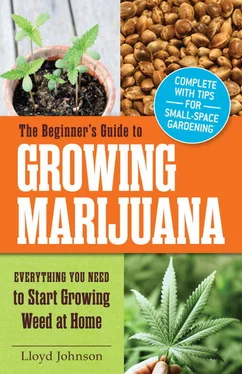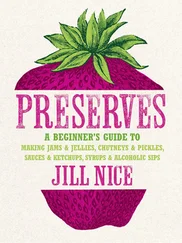Blood meal applications last up to four months and should be used with caution. Use no more than four ounces per square yard during the growing or vegetative phase. Growers do use it as an element in tea for their plants, and dilution with water makes it less likely to burn tender young plants.
As long as your plants are in a vegetative phase of growth, they will use a lot of nitrogen and push to grow big and leafy. Watch each plant as an individual, particularly if ground planted, and feed a “power drink” of special compost or manure tea once a week. This can coincide with the plants’ watering schedule for convenience.
Fertilizing for Flowering
Once cannabis begins its flowering phase, you should stop any foliar feeding. Flowering cannabis plants secrete resins for more than one reason, but note that resins are a natural insulation from the elements. Foliar feeding in the flowering phase cools the plants and causes less resin secretion. Foliar feeding should only be done in the vegetative phase, and it should be stopped within two weeks after flowering begins.
Stop all feedings for two weeks before harvesting your plants, giving only water if needed. In many areas the grower will already be struggling with the beginning of fall rains and probably will not need to water at all.
As cannabis begins flowering, the plants will need more phosphorus and potassium than during the vegetative phase of growth. They will still need some nitrogen, but not as much as they did during vegetative growth. They also need calcium, which you can supply by scratching finely powdered organic eggshells into the soil around the main stem. If you are using premade organic supplements, look for an N-P-K ratio in the neighborhood of 15-30-30 for flowering.
Organic fertilizers of any kind are beneficial to any soil. They build up the organic content of the soil, which improves its drainage and structure. By improving soil structure, you increase its ability to hold and release nutrients. The natural breakdown of the organic material by beneficial soil organisms can provide almost all the nutrients that a plant requires during the vegetative and flowering phases.
The Importance of Compost Tea
Although it should only be used as a foliar spray (sprayed on leaves) during the vegetative phase of cannabis growth, compost tea helps suppress foliar diseases, increases the amount of nutrients available to the plant, and speeds the breakdown of toxins. If you only apply compost to your soil in the traditional way, you can miss out on additional benefits from compost.
Compost extract (unlike compost tea) is a watery extract made from compost suspended in a barrel of water for no more than one hour before use, soaking in an old pillowcase or burlap sack. The benefit of extract is a supply of soluble nutrients that can be used as a gentle liquid fertilizer. This method is good for a quick mix but lacks sufficient holding time for beneficial microorganisms to multiply and grow significantly.
Money Smart
Why make a compost tea rather than just working compost into the soil? Compost tea will make the benefits of compost go farther. And it has many benefits.
Compost teas are different from compost extracts—they are brewed much longer with microbial food and catalyst sources added to the solution, ideally a bubbler aerating the solution with oxygen. The aim of the brewing process is to extract beneficial microbes from the compost itself, followed by growing these populations of microbes during the twenty-four- to thirty-six-hour brewing period. The compost provides the source of microbes, and the microbial food and catalyst amendments promote the growth and multiplication of microbes in the tea. Microbial food sources can include molasses, kelp powder, and fish powder. Some examples of microbial catalysts are humic acid, yucca extract, and rock dust.
Manure Teas
Manure tea is a term used almost interchangeably with compost tea, and it is made and used in the same way. It is still required that the manure be composted, but it is pure composted manure as opposed to the blend of materials used for compost. Some people like to use chicken manure, while some prefer manure from steer or horses; others even recommend exotic manures from the local zoo. Generally, poultry manure is highest in nitrogen content, followed by hog, steer, sheep, cow, and horse manure.
Bat guano, or bat feces, is expensive manure, but it contains so many necessary macro- and micronutrients, as well as beneficial microorganisms, that it is very highly prized by cannabis gardeners. Guano from insect-eating bats is very high in nitrogen; fruit-eating bats produce guano that is higher in phosphorus.
Guano generally consists of ammonia, along with uric, phosphoric, oxalic, and carbonic acids, plus some earth salts and a high concentration of nitrates. Guano supplies nutrients in these approximate amounts: 9 percent nitrogen, 6 percent phosphorus, and 2 percent potassium.
All manures used in making manure tea should be well composted. The heat generated by composting will kill unwanted seeds and possible pathogens.
Watering outdoor cannabis, particularly plants grown in containers, can be a little tricky. You must learn to observe the plants closely, as you are dealing with individuals, and pay attention to the weather variations that are part of an outdoor grow. Although large cannabis plants outdoors prefer a deep, once-a-week soaking, high temperatures and drying winds can speed up their need for water. Do not feel like you must stick to a rigid watering schedule. If the plants are thirsty and stressed two days before their scheduled watering, the attentive cannabis gardener will water right away.
As a general rule, let the plants dry out slightly between waterings; you want their roots to reach or stretch a little bit. Cannabis is also very resentful of soggy soil; it can create a very unhealthy environment that is too full of ammonia and that lacks air, something very essential for healthy roots and good plant growth.
If your plants are in large containers, the soil should be dry enough to just be starting to pull away from the edge of the container before you water again. The best way for you to check on the moisture level in your plants’ soil is to put your finger down in the soil and feel. Dew can make the top layer of soil look quite moist, but the finger test can show if soil is bone dry a few inches below and if the plants need water.
Ground-planted plants need a slow drip that, depending on your soil, can be left on them for hours. When water starts to pool around the plant’s base, move the drip to the next plant. Plants in large containers should also have slow watering; this gives the water a chance to soak down through all of the soil. Trying to water quickly will just create channels of least resistance, and possibly damage side roots. As a general rule, water container plants so that the water pools and drains three times in the session.
How to Field Groom and Identify Harvest Time
Once the plants start into their flowering phase, there will be a natural yellowing and drop of fan leaves. If this occurs before flowering begins, the cannabis gardener has cause for concern. This usually means a lack of nitrogen or other soil imbalance, and you should immediately test the soil for pH and N-P-K levels. Sometimes excessive yellowing indicates that the plant has too much nitrogen, especially if it has been overfed. It is always important to test before trying to adjust soil values.
The natural yellowing and leaf drop is a good sign that things are proceeding as nature intended, but the good cannabis grower needs to start grooming her plants. Clumps of dead leaves that catch in the plant stems or surround the main stem on the ground are just breeding areas for molds and pests. The flowers need all the air circulation they can get, so you must help your plants by removing dying fan leaves on a daily basis. This is actually a very pleasant activity and beneficial in that it requires you to closely examine each plant every day. This close contact will ensure that you spot any pest problems or developing molds right away.
Читать дальше












